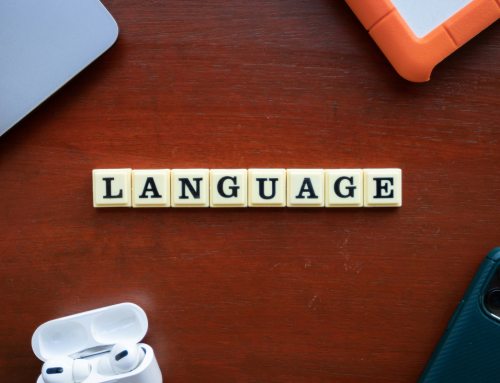Ever wonder what the right etiquette is with guide dogs? Is it really okay to touch or feed them?
It can be really tempting to touch or feed them, but it can be dangerous to distract a dog when it is working. Guide dogs are dogs that are specially trained to support people with visual impairments. They tend to be golden retrievers, labradors, or a mix. Guide dogs are a mobility aid for their owners, helping them to avoid obstacles and navigate.
Our blog will share six easy tips:
1. To pet or not to pet…..
Tempting? Totally.
Helpful? Not at all.
Guide dogs are trained to stay focused on their person’s safety. If they get distracted, it means they can miss a command, which can be dangerous for the person they are guiding. If you see a guide dog wearing a harness, then it is a working dog, not a pet. Some dogs may not wear harnesses, so always ask if you are approaching a dog if it is okay to pet them.
People have different comfort levels with their dogs being touched. Don’t touch a guide dog without asking first, and respect the owner’s answer.
Did you know? The first guide dogs were actually trained in Merseyside, in the north of England, in 1931.
2. Don’t feed a guide dog
Don’t feed a guide dog. Sometimes, guide dogs can be on special diets, and any deviation from this can cause them to need the toilet unexpectedly. This puts their owner in a difficult situation as they may need to take them outside or risk accidents inside.
Guide dogs are often Labrador Retrievers for a reason—they will do anything for food! As a result, they are easily trained using treats. If a dog is given treats, it may feel it has done its job and not respond to commands.
3. Put water down
If you work in an office where someone brings a guide dog in, then thinking about space planning can be a good idea. This can include planning where someone’s desk is so your colleague has enough space for the dog or a dog bed. Make sure that the dog has access to clean, fresh drinking water.
It also means finding a space where the dog can go to the toilet.
4. Guide dogs go everywhere
Guide dogs are working dogs. In restaurants, taxis, shops, and hotels, guides have the legal right to enter most public spaces with their handler. Denying access is discriminatory.
It does happen. Guide Dogs UK estimate that up to ‘three-quarters of guide dog owners say they have experienced an access refusal in the past.’
Did you know? Assistance Dogs UK estimates that there are over 7,000 assistance dogs (including guide dogs) currently in the UK.
5. Keep your dog under control
If you’re a fellow dog owner, keep your pet on a lead and give guide dogs plenty of space. Even the calmest dogs can get curious, and a surprise sniff from an off-lead pup can distract a guide dog. With a rise in dog-friendly offices, this can also be an unexpected problem for businesses that allow you to bring your pup to work days.
6 – Escalators
Not all guide dogs are trained with escalators outside of London. When it comes to guide dog training, it is essential in London to make sure guide dogs can use the tube. It’s only now that guide dogs all over the country are being trained with escalators.
If you have to use an escalator, why not offer a person with a guide dog the chance to take the lift instead?
Interested in reading more top tips? Why not head to our blog page, where you can find more posts like this one?



